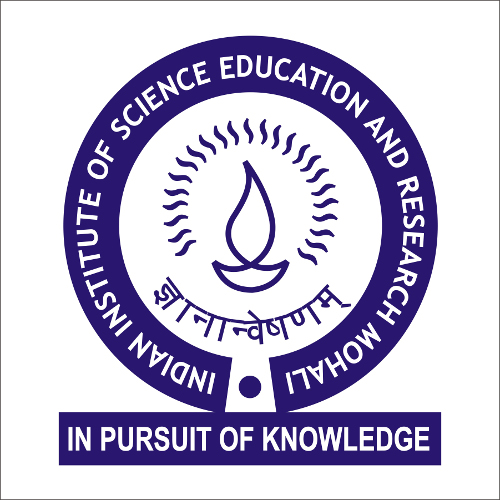Forthcoming Events
Gut-Bone-Axis and its Physiological relevance to counter Bone Disease
Dr. Subhashis Pal, Associate Scientist, Department of Medicine, Emory University, Atlanta, GA, USA
Location : Online
Abstract: Osteoporosis is one of the major metabolic bone diseases in India, affecting roughly 61 million people, out of these 80% are women. Not only does osteoporosis result in pain, and hunched posture but causes compound fractures, particularly in the spine, hip, or long bone. Gut-Bone-Axis is the new emerging area of research, revealing previously unknown contributors to bone health. Our studies showed that gut microbiome involved in extensive crosstalk with gut resident immune cells and bone cells, thus largely affecting bone health.
In this research seminar, I want to highlight the physiological relevance of gut-bone-axis covering crosstalk between immune cells and bone cells during post-menopausal osteoporosis, and signalling mechanisms involved in melanoma bone metastasis regulation with an emphasis on therapeutic approaches to counter bone disease.
While exploring the signaling crosstalk between immune cells and bone cells during post-menopausal osteoporosis, we found that estrogen deficiency results in poor gut permeability, which results in TNF+ T cells and Th17 cell activation in the gut. Activation promotes the egress of TNF+T cells and Th17 cells from the gut through an S1PR1-mediated mechanism. After that, TNF+ T cells entered into bone microenvironment under the influence of the CXCR3-CXCL9 axis. Once entered into bone marrow, TNF+ T cells increase the production of CCL20 under the influence of inflammatory cytokine TNF, and finally, CCL20 attracts Th17 cells to the bone marrow site via the CCL20-CCR6 axis. Th17 and TNF cells then promote RANKL production and osteoclast activation, as a result, bone resorption increased. My recent work was focused on studying the possible signaling mechanism through which melanoma tumor growth is regulated in the bone micro-environment and the possible influence of gut microbiome in this context. Our findings showed that the gut microbiome restrains the progression of melanoma bone lesions in mice by promoting the expansion of intestinal NK cells and Th1 cells and enhancing their migration to tumor-bearing bones. The egress of NK and Th1 cells from the gut and their entrance into the bloodstream are driven by S1PR1/5 receptors. We also found that the influx of NK and Th1 cells to the tumor site is dependent on the chemokine receptor CXCR3, which is expressed by NK cells and Th1 cells, and on its ligand CXCL9. During gut dysbiosis condition expansion of intestinal NK cells and Th1 cells are affected, and a smaller number of cells egress into the bloodstream. This leads to a lower influx of NK and Th1 cells to the tumor site, leading to accelerated bone tumor growth.
My future research goal is deciphering Mesenchymal stem cells-immune cells crosstalk to promote fracture healing and restore immune system balance to improve bone health, a potential therapeutic approach for osteoporosis treatment.
Meeting ID: 920 3791 4366
Passcode: 374686
In this research seminar, I want to highlight the physiological relevance of gut-bone-axis covering crosstalk between immune cells and bone cells during post-menopausal osteoporosis, and signalling mechanisms involved in melanoma bone metastasis regulation with an emphasis on therapeutic approaches to counter bone disease.
While exploring the signaling crosstalk between immune cells and bone cells during post-menopausal osteoporosis, we found that estrogen deficiency results in poor gut permeability, which results in TNF+ T cells and Th17 cell activation in the gut. Activation promotes the egress of TNF+T cells and Th17 cells from the gut through an S1PR1-mediated mechanism. After that, TNF+ T cells entered into bone microenvironment under the influence of the CXCR3-CXCL9 axis. Once entered into bone marrow, TNF+ T cells increase the production of CCL20 under the influence of inflammatory cytokine TNF, and finally, CCL20 attracts Th17 cells to the bone marrow site via the CCL20-CCR6 axis. Th17 and TNF cells then promote RANKL production and osteoclast activation, as a result, bone resorption increased. My recent work was focused on studying the possible signaling mechanism through which melanoma tumor growth is regulated in the bone micro-environment and the possible influence of gut microbiome in this context. Our findings showed that the gut microbiome restrains the progression of melanoma bone lesions in mice by promoting the expansion of intestinal NK cells and Th1 cells and enhancing their migration to tumor-bearing bones. The egress of NK and Th1 cells from the gut and their entrance into the bloodstream are driven by S1PR1/5 receptors. We also found that the influx of NK and Th1 cells to the tumor site is dependent on the chemokine receptor CXCR3, which is expressed by NK cells and Th1 cells, and on its ligand CXCL9. During gut dysbiosis condition expansion of intestinal NK cells and Th1 cells are affected, and a smaller number of cells egress into the bloodstream. This leads to a lower influx of NK and Th1 cells to the tumor site, leading to accelerated bone tumor growth.
My future research goal is deciphering Mesenchymal stem cells-immune cells crosstalk to promote fracture healing and restore immune system balance to improve bone health, a potential therapeutic approach for osteoporosis treatment.
Meeting ID: 920 3791 4366
Passcode: 374686

